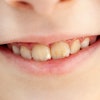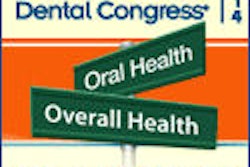
The ADA has released its latest report on oral health disparities in underserved populations, focusing on programs that target tooth decay and periodontal disease, the two most prevalent dental problems.
The report, "Action for Dental Health: Bringing Disease Prevention into Communities," is the first of two ADA white papers addressing the importance of disease prevention.
The 14-page report is part of the organization's goal to deliver care to people with untreated disease; strengthen and expand the public/private safety net to provide more care to more Americans; and bring dental health education and disease prevention to people in underserved communities, stated ADA President Charles Norman III, DDS, in the introduction.
"Millions of Americans are living in what amounts to a dental health crisis," he noted. "Disease prevention is the object of increasing focus in all of healthcare and holds the greatest promise for continued success. But dentistry is unique in both the length of time that it has practiced prevention and the degree of its success. Prevention will never be universal. There will always be disease that has progressed to the point that restorative care is needed. But the occurrence of disease can be reduced dramatically."
The ADA's recently launched Action for Dental Health campaign includes several initiatives that address the complex barriers that impede millions of Americans from accessing adequate dental care.
These initiatives fall into three distinct areas:
- Providing care to the most needy, including the elderly in nursing homes, children from low-income families, and the uninsured, who are most likely to resort to hospital emergency rooms seeking relief from dental pain
- Strengthening the public/private dental safety net to increase capacity to deliver care
- Focus on disease prevention and oral health education through community water fluoridation, the use of community dental health coordinators, better collaboration between dentistry and other health professions, and public health programs in schools and other public and private settings
Dental caries is the most prevalent childhood disease, affecting more than 25% of American children ages 2 to 5 and half of those ages 12 to 15, according to the Centers for Disease Control and Prevention (CDC). But the problem doesn't end in adulthood, the ADA report noted. Some 28% of people ages 35 to 44 have untreated caries, and the rate is 18% in those 65 and older.
“Disease prevention is the object of increasing focus in all of healthcare and holds the greatest promise for continued success.”
ADA
And the high rate of caries disproportionately affects minorities and low-income populations, studies show.
In addition to income and ethnicity, many factors can determine oral health status, including education, age, language barriers, cultural factors, oral health literacy, ability to perform daily oral healthcare, insurance status, and geography, the ADA paper noted. Unhealthy behaviors such as neglecting to brush and floss, using tobacco and alcohol, and poor nutrition also can adversely affect dental health.
Medical conditions are a factor as well. More than 125 health conditions may affect or be affected by oral health, including cardiovascular disease, the human papillomavirus (HPV) infection, HIV/AIDS, osteoporosis, obesity, and autoimmune disorders such as rheumatoid arthritis, the report noted.
Developmentally disabled people suffer from a high rate of caries and periodontitis for many reasons, ranging from being unable to hold a toothbrush to a lack of understanding of basic oral hygiene. This can make the disabled more susceptible to disease while making it more difficult to get treatment, the report stated.
Combined with services by dental professionals, basic things such as brushing with fluoride toothpaste, flossing, drinking fluoridated water, following a healthy diet, and avoiding tobacco and excessive alcohol use can all but eliminate decay, the report pointed out.
The average cost for community fluoridation ranges from about 50¢ a year per person in large communities to approximately $3 a year per person in small communities, according to the report. The cost of providing fluoridated water throughout someone's life is estimated to be less than the cost of a single filling, the report noted.
"The shame of it all is that we have some very well-understood preventive options, like water fluoridation and sealants," Bill Bailey, DDS, MPH, acting director of the CDC's Oral Health Division, stated in the report. "These measures can cut decay significantly, but we still have 80 million people without fluoridated water. And sealants? Well, we're well below where we should be."
However, many states face the reality of dwindling budgets that make it difficult for oral health programs to thrive, the report noted.
Educating parents and caregivers
To fight the growing prevalence of early childhood caries, oral health assessments should be made in children by their first birthday, according to the report.
"It's simply a great opportunity to teach parents about what they can do for their children in order to prevent that 4 a.m. sobbing toothache," Jane Grover, DDS, stated in the report. She is a former dental director for a federally qualified health center (FQHC) in Jackson, MI, who now serves on the ADA's Council on Access, Prevention and Interprofessional Relations.
Regarding the ongoing debate over workforce models, it's better to educate patients and their caregivers, according to Alice Horowitz, PhD, a professor at the University of Maryland School of Public Health. "We're focusing on who holds the drill," she noted. "What we need to do is focus on prevention. Prevention is key. Education is key. There are people who don't know why fluoride is good, who don't know what a sealant is."
Around age 6, when children are getting their first permanent molars, they should get an application of sealants, in addition to regular dental checkups, the report noted. This preventive measure should be repeated when second permanent molars erupt about age 12.
Oral health education should also include the important role that nutrition, eating patterns, and food choices play in preventing or promoting tooth decay, the report added. Tomatoes and citrus fruits contain acids that can harm enamel. Fruit juices, widely considered a healthy alternative drink, can have just as much sugar as soda, the report noted. Dried fruits can stick to teeth, prolonging the damage their natural acids can inflict. A lack of certain nutrients also can make it more difficult for tissues in the mouth to resist infection.
School-based screenings
Twelve states and many school districts require parents to show proof that their children have received basic dental exams before enrolling in public schools, the report stated.
While many dentists consider these assessments to be the basis of preventive and early restorative care for children, others remain skeptical about school-based screening requirements unless they are linked to available treatment. In the report, one former state dental director refers to them as "supervised neglect," adding, "If you're not offering treatment with [a screening] ... then it's just going to be a piece of paper telling parents what they already know."
New York schools are required to give parents a list of dentists who are willing to provide free or reduced-cost care, the report noted. Maryland requires that mobile clinics visiting schools must refer all children in need of care to dentists who are accepting Medicaid patients, so the mobile clinics can get Medicaid reimbursements.
Community dental health coordinators
The Community Dental Health Coordinator (CDHC) program is a new model of community health worker introduced by the ADA. They get 18 months of online and clinical education, which prepares them to deliver oral health education and prevention services, and help patients navigate an often daunting public health system to get dental care.
"It's great when there are people that are from the community ... and you give them the skill sets that they need to go into the community and then educate, navigate, and bring them in to get the kind of treatment that everybody deserves," stated Dunn Cumby, DDS, who directed the CDHC program at the University of Oklahoma, in the report.
"It's an ambitious campaign with no less a goal than a virtual end to untreated dental disease in America. And prevention will be the ultimate key to accomplishing that goal," concluded ADA President Dr. Norman.



















